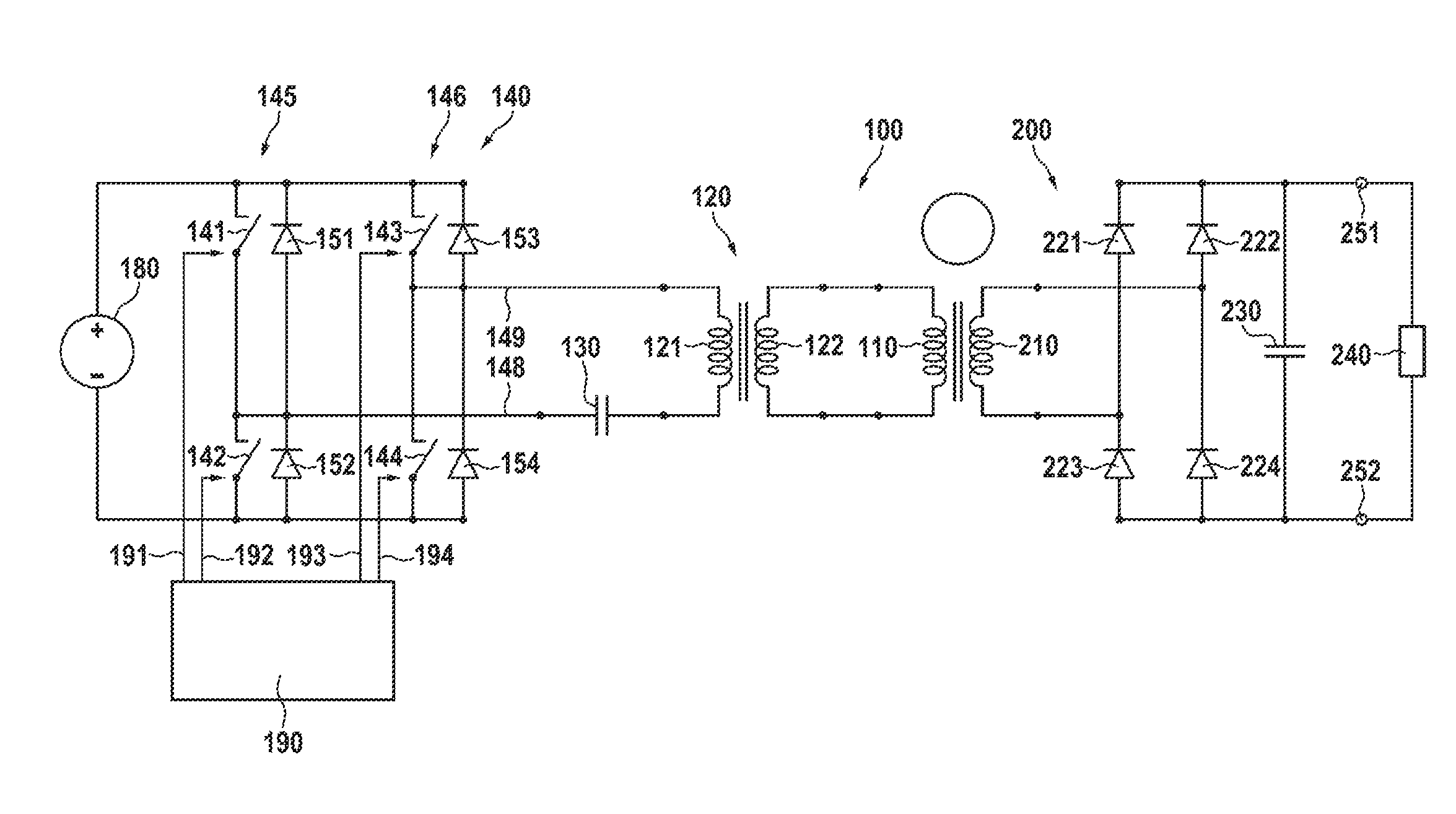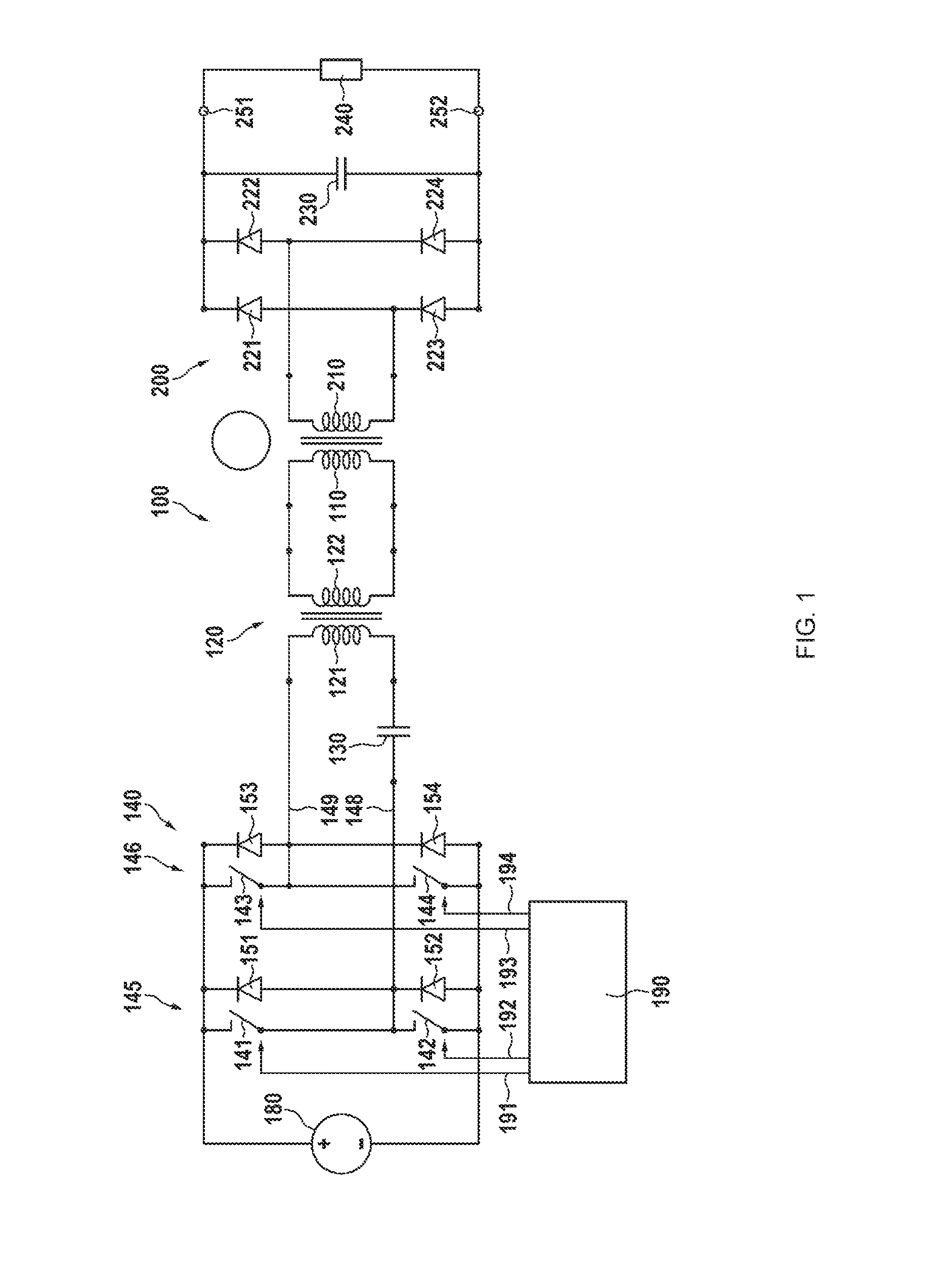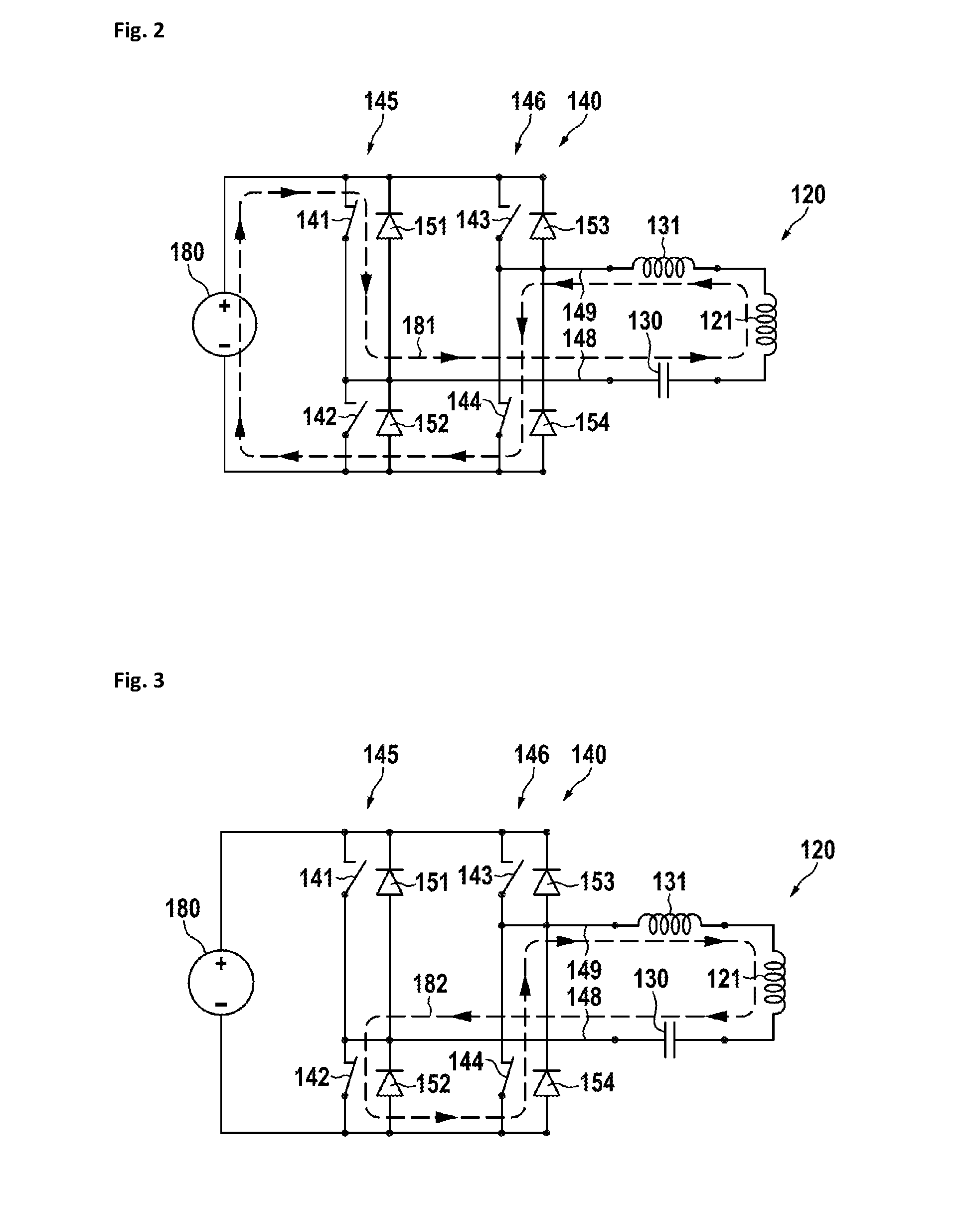Inductive rotary joint with multimode inverter
a multi-mode inverter and rotary joint technology, applied in the direction of dc-ac conversion without reversal, inductance, tomography, etc., can solve the problems of insufficient inductive coupling of rotary joints, large stress or even overload of associated electronic components, and high power contactors that are required for switching over input signals. , to achieve the effect of improving dynamic range, avoiding large inrush current, and increasing output power
- Summary
- Abstract
- Description
- Claims
- Application Information
AI Technical Summary
Benefits of technology
Problems solved by technology
Method used
Image
Examples
Embodiment Construction
[0032]In FIG. 1, the circuit diagram of a preferred embodiment is shown. An inductively coupled contactless rotary joint has a primary side 100 and a secondary side 200. Preferably, the primary side 100 is the stationary side, whereas the secondary side 200 is the rotating side. It is obvious that stationary and rotating sides may be exchanged for coupling power from the rotating to the stationary side. At the primary side, there is a DC power source 180 having a positive output and a negative output for delivering DC power to an inverter 140, which generates an AC signal which is further coupled via a resonance capacitor 130, an optional transformer 120 having a primary winding 121 and a secondary winding 122 to a primary winding 110 of the rotating transformer.
[0033]The DC power source 180 may be a battery, a DC line, a rectifier circuit like a bridge or a one-way rectifier for rectifying an AC power line signal or a power factor correction circuit for generating a DC signal from ...
PUM
 Login to View More
Login to View More Abstract
Description
Claims
Application Information
 Login to View More
Login to View More - R&D
- Intellectual Property
- Life Sciences
- Materials
- Tech Scout
- Unparalleled Data Quality
- Higher Quality Content
- 60% Fewer Hallucinations
Browse by: Latest US Patents, China's latest patents, Technical Efficacy Thesaurus, Application Domain, Technology Topic, Popular Technical Reports.
© 2025 PatSnap. All rights reserved.Legal|Privacy policy|Modern Slavery Act Transparency Statement|Sitemap|About US| Contact US: help@patsnap.com



